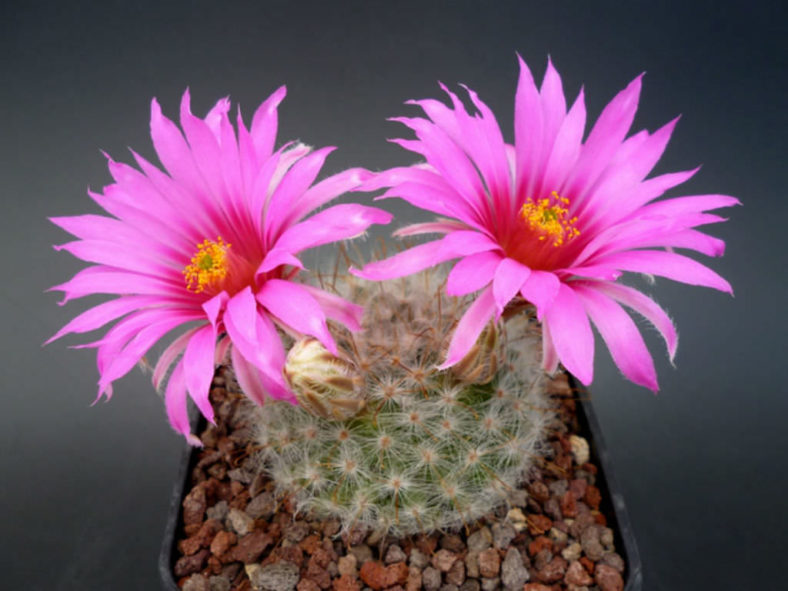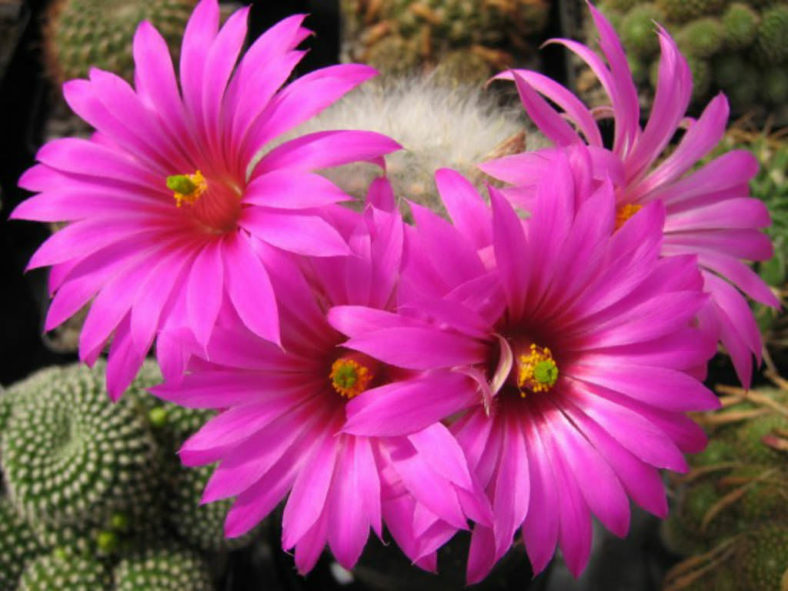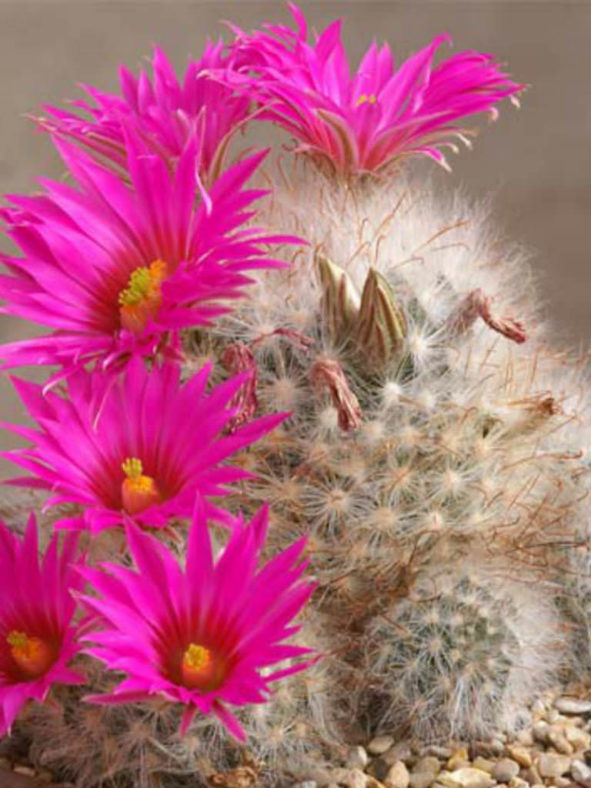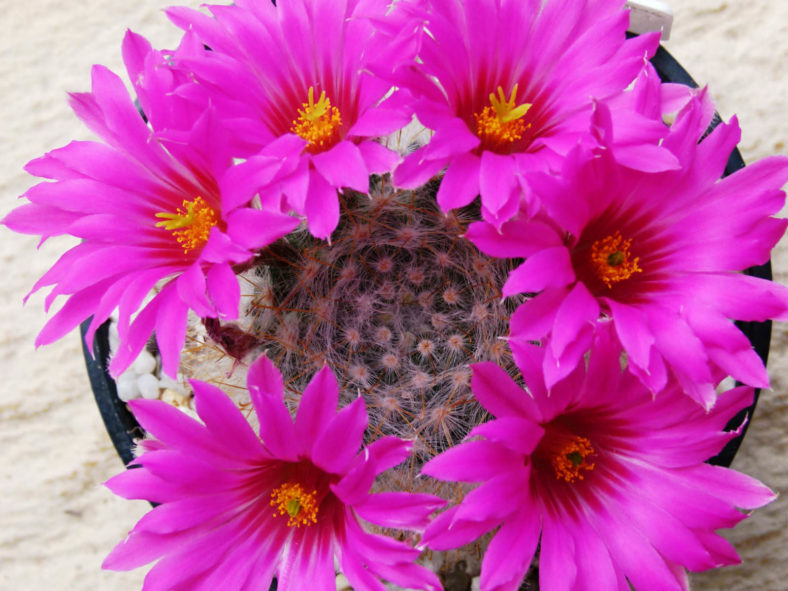Scientific Name
Cochemiea guelzowiana (Werderm.) P.B.Breslin & Majure
Synonym(s)
Bartschella guelzowiana, Krainzia guelzowiana, Mammillaria guelzowiana, Phellosperma guelzowiana
Scientific Classification
Family: Cactaceae
Subfamily: Cactoideae
Tribe: Cacteae
Genus: Cochemiea
Etymology
The specific epithet "guelzowiana" (pronounced "gewl-zow-ee-AY-nuh") honors Robert Gülzow, a German cactus collector from Berlin, who introduced this species in 1927.
Origin
Cochemiea guelzowiana is endemic to Mexico. It grows in Durango, Coahuila, and Nuevo León, in hot deserts and on grassy mountain tops on rocky outcrops at elevations ranging from 4,265 to 5,580 feet (1,300 to 1,700 m) above sea level.
Description
Cochemiea guelzowiana, formerly known as Mammillaria guelzowiana, is a small cactus with globose, apically depressed stems with conical and cylindrical tubercules tipped with areoles that bear clusters of numerous spines. The stems can grow up to 2.8 inches (7 cm) tall and up to 4 inches (10 cm) in diameter, initially solitary but later clustering at a very young age. Each areole bears 1 to 6 central spines, one of which is usually hooked, and 60 to 80 radial spines. The central spines are reddish-brown to yellow, measuring up to 1 inch (2.5 cm) in length, while the radial spines are white, hair-like, measuring up to 0.6 inches (1.5 cm) in length.
The flowers are bright pink to purplish red and appear in late spring and summer. They are bell-shaped and can reach a length of 1.6 inches (4 cm) and a diameter of 2.8 inches (7 cm). The fruits are pale red or yellowish-white, almost globose, and can grow up to 0.3 inches (0.8 cm) in diameter.

How to Grow and Care for Cochemiea guelzowiana
Hardiness: USDA hardiness zones 9b to 11b: from 25°F (-3.9°C) to 50°F (10°C).
To encourage better flowering, allow the plants a cooling period in winter and suspend watering. Unlike many other cacti, which use their ribs as storage devices, Mammillaria features raised tubercles, from which spines emerge. When you water, the tubercles expand to increase water storage. The flowers appear from the axils of these tubercles on the previous year's growth, which accounts for their interesting halo effect. The cactus mustn't be exposed to prolonged dampness or standing water. Never let your cactus sit in a dish of water. Lastly, be sure to fertilize during the growing season for optimal results.
Repot as needed, preferably during the warm season. To repot Mammillaria, ensure the soil is dry before repotting, then gently remove the pot. Knock away the old soil from the roots, removing any rotted or dead roots. Treat any cuts with a fungicide. Place the plant in its new pot and backfill it with potting soil, spreading the roots as you repot. Leave the plant dry for a week or so, then begin to water lightly to reduce the risk of root rot.
See more at How to Grow and Care for Mammillaria.
Links
- Back to genus Cochemiea
- Succupedia: Browse succulents by Scientific Name, Common Name, Genus, Family, USDA Hardiness Zone, Origin, or cacti by Genus
Photo Gallery
Click on a photo to see a larger version.


